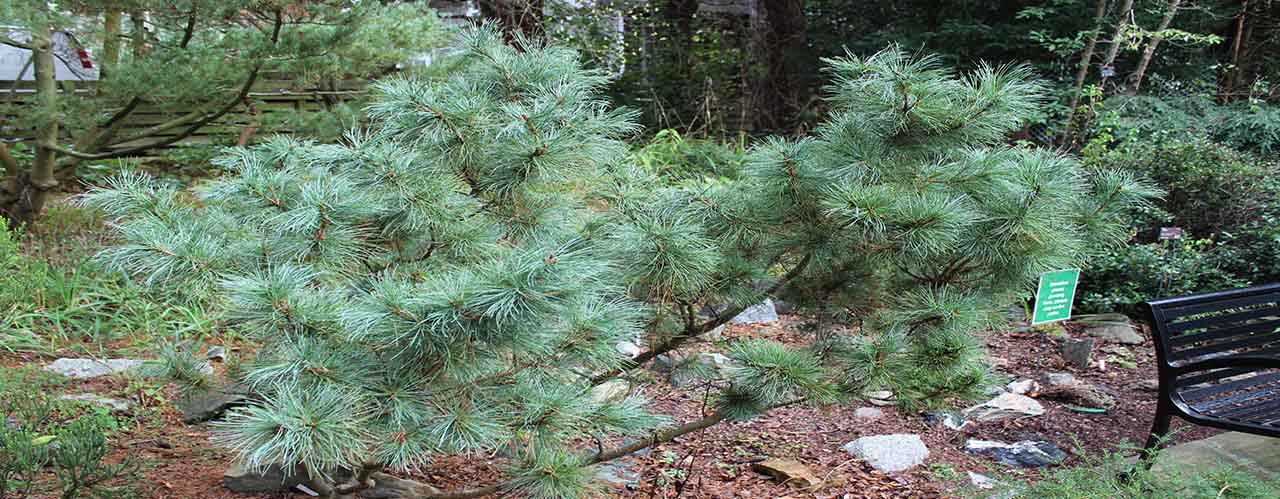
Many of the slow growing conifers recommended here generally grows less than 3 feet in height in the first 10 years. However, in the Pacific Northwest with its fertile soil, it can be expected to grow more than 3 feet in 10 years in their natural setting. (Image: Pinus pumila Siberian Dwarf White Pine)
There is no doubt, nearly all of our garden plants came from wildlings. I’m using the term “wildlings” here to refer to “the wild nature of plants” and not “the people of the Seven Kingdoms” in the Game of Thrones or “the Vale mountain clans who live beyond the Wall.” Every small tree came from a unique niche in the forests. Many forests in the north temperate world have a vertically layered architecture. The dominant trees like Douglas fir, western hemlock and western red cedar form the uppermost layer, the canopy beneath is a subordinate layer of small trees and shrubs. For our region in the Pacific Northwest, this subordinate layer often had vine maple, western yew, cascara, Indian plum and madrone which are most suited for small gardens.
What you need to know here is that different growing conditions in different regions can vary the ultimate height of plants.
Many of the slow growing conifers recommended here generally grows less than 3 feet in height in the first 10 years. However, in the Pacific Northwest with its fertile soil, it can be expected to grow more than 3 feet in 10 years in their natural setting. Planting these conifers in the rockeries, small gardens or patio pots may result in a growth of around 3 feet in 10 years. These slow growing conifers are often referred to as “dwarf conifers“. Don’t be fooled because they will eventually get larger in 20 or 30 years, but most stay fairly compact and are classified based on their growth rate and size at 10 years.
What you need to know here is that different growing conditions in different regions can vary the ultimate height of plants. Most dwarf firs and spruces are very slow to start but as their roots develops they grow much faster. If that happens in your own case, be rest assured that judicious root and branches pruning will help to slow down their growth.
As we all know, most cone-bearing trees are part of the overarching canopy which are too massive for small gardens. Yet some conifers are small enough to fit in small garden. There are several small conifers that are suitable for small or urban garden and provide reliable shelter for wildlife like birds. These conifers also offer nice color and year-round structure in the garden. Here are two pines of northeastern Asia including the islands of Japan that are suitable for confined spaces and are both five-needled species: Pinus parviflora and Pinus pumila.
Most conifers in nature are just too big for small gardens. That is why propagators came up with a unique form of any tree, the cultivar; defined here as any plant produced in cultivation by selective breeding.
There are two of our native pines that are also suitable for confined spaces: Bergman’s Limber pine (Pinus flexilis‘Bergman’s Dwarf’) and White bark pine (Pinus albicaulis‘Engelm’). Pinus flexilis‘Bergman’s Dwarf’ and Pinus albicaulis‘Engelm’ are both slow-growing, long-lived tree of the high mountains of the British Columbia Coast Ranges, the Cascade Range, the Sierra Nevada, and the Rocky Mountains from Wyoming to Alberta. True firs (species of Abies) are mostly too tall for small gardens. Yet there are two species that are small enough for an urban garden: Dwarf Korean fir (Abies koreana‘Starker’s Dwarf‘) and our native subalpine fir (Abies lasiocarpa‘Arizonica Compacta’). Abies koreana‘Starker’s Dwarf‘has attractive forest green foliage with white undersides. The small needles are ornamentally significant but remain forest green through the winter. Abies lasiocarpa‘Arizonica Compacta’ on the other hand is a dwarf compact squatty conical plant in which its dense branching creates a tight conical form that grows very slowly.
Most conifers in nature are just too big for small gardens. That is why propagators came up with a unique form of any tree, the cultivar; defined here as any plant produced in cultivation by selective breeding. There are ample coniferous cultivars of all sizes. A classic example is the Oregon native Lawson cypress (Chamaecyparis lawsoniana). There are well over 100 known cultivars of this specie, ranging in sizes from dwarf to small trees; two fine examples are C. lawsoniana‘Glauca Elegans’ and cultivar ‘Elegantissima’. Note that a cultivar name follows the original species name and is given single quotes and starts with a capital letter. The other example is a fine cultivar of our native mountain hemlock: (Tsuga mertensiana‘Elizabeth’). There are even small cultivars of massive Douglas fir and sequoias. The eastern North American tall tree; eastern hemlock has many cultivars; some of which are readily available at the MsK Rare and Native Plant Nursery in Shoreline, Washington; Tsuga canadensis‘Sargent’s Weeping’ hemlock.
Many local nurseries, including the MsK Rare and Native Plant Nursery located in the heart of the Kruckeberg Botanic Garden in Shoreline, Washington sell dwarf and small conifers varieties named cultivars suited for your urban garden.
Following is a condensed list of dwarf to small conifers to take with you while shopping at your favorite nursery. The conifers you pick will depend on the habitat you have for it. You can pick a dwarf conifer to fill either a narrow vertical habitat and add a sense of depth or a broad one that serve as a focal point in a wide-open rockery.
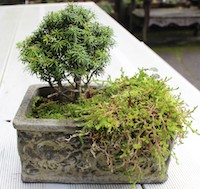
Abies
Abies balsamea‘Hudsonia’
Abies balsamea‘Nana’
Abies balsamea‘Verkade’s Prostrate’
Abies cephalonica‘Meyer Dwarf’
Abies koreana‘Starker’s Dwarf‘
Abies lasiocarpa‘Arizonica Compacta’
Abies nordmanniana‘Golden Spreader’
Abies procera‘La Graciosa’
Cedrus
Cedrus atlantica‘Glauca Pendula’
Cedrus deodara‘Blue Snake’
Cedrus deodara‘Feelin Blue’
Cedrus deodara‘Lime Glow’
Cedrus deodara‘Golden Cascade’
Cedrus deodara‘Mountain Beauty’
Cedrus deodara‘Pendula’
Cedrus libani‘Hedgehog’
Chamaecyparis lawsoniana
Chamaecyparis lawsoniana‘Albovariegata’
Chamaecyparis lawsoniana‘Aurea Densa’
Chamaeycparis lawsoniana‘Bleu Nantais’
Chamaecyparis lawsoniana‘Blue Jacket’
Chamaecyparis lawsoniana‘Glauca Elegans’
Chamaecyparis lawsoniana‘Elegantissima’
Chamaecyparis lawsoniana‘Ellwood’s Gold Pillar’
Chamaecyparis lawsoniana‘Ellwood’s Nymph’
Chamaecyparis lawsoniana‘Erecta Alba’
Chamaecyparis lawsoniana‘Erecta Viridis’
Chamaecyparis lawsoniana‘Fleckellwood’
Chamaecyparis lawsoniana‘Forsteckensis’
Chamaecyparis lawsoniana‘Green Globe’
Chamaecyparis lawsoniana‘Lycopodioides’
Chamaecyparis lawsoniana‘Minima Glauca’
Chamaecyparis lawsoniana‘Pygmaea Argentea’
Chamaecyparis lawsoniana‘Armstrongii’
Chamaecyparis lawsoniana‘Barrys Silver’
Chamaecyparis lawsoniana‘Blue Gem’
Chamaecyparis lawsoniana‘Chilsworth Silver’
Chamaecyparis lawsoniana‘Ellwood’s Pillar’
Chamaecyparis lawsoniana‘Emerald’
Chamaecyparis lawsoniana‘Erecta Aurea’
Chamaecyparis lawsoniana‘Filiformis Compacta’
Chamaecyparis lawsoniana‘Fletcher’s White’
Chamaecyparislawsoniana‘Golden Showers’
Chamaecyparis lawsoniana‘Lutea Nana’
Chamaecyparis lawsoniana‘Minima Aurea’
Chamaecyparis lawsoniana‘Nidiformis’
Chamaecyparis lawsoniana‘Summer Snow’
Chamaecyparis lawsoniana‘Tabuliformis’
Chamaecyparis lawsoniana‘Tharandtensis Caesia’
Chamaecyparis obtusa
Chamaecyparis obtusa‘Bassett’
Chamaecyparis obtusa‘Coralliformis’
Chamaecyparis obtusa‘Golden Fern’
Chamaecyparis obtusa‘Lutea Nana’
Chamaecyparis obtusa‘Nana’
Chamaecyparis obtusa‘Nana Gracilis’
Chamaecyparis obtusa‘Repens’
Chamaecyparis obtusa‘Sparkles’
Chamaecyparis obtusa ‘Templehof’
Chamaecyparis obtusa‘Chabo yadori’
Chamaecyparisobtusa‘Chabo yadori’
Chamaecyparis obtusa‘Intermedia’
Chamaecyparis obtusa‘Kosterii’
Chamaecyparisobtusa‘Mariesii’
Chamaecyparis obtusa‘Nana Aurea’
Chamaecyparis obtusa‘Pygmaea’
Chamaecyparis obtusa‘Spiralis’
Chamaecyparis nootkatensis‘Glauca Compacta’
Chamaecyparis pisifera
Chamaecyparis pisifera‘Baby Blue’
Chamaecyparis pisifera‘Filifera Nana’
Chamaecyparis pisifera‘Filifera Variegata’
Chamaecyparis pisifera‘Nana Parslorii’
Chamaecyparis pisifera‘Plumosa Aurea Nana’
Chamaecyparis pisifera‘Plumosa Compressa’
Chamaecyparis pisifera‘Tsukomo’
Chamaecyparis thyoides‘Andeleyensis Nana’
Chamaecyparis pisifera‘Curley Top’
Chamaecyparis pisifera‘Filifera Aurea Nana’
Chamaecyparis pisifera‘Filifera Sungold’
Chamaecyparis pisifera‘Nana Albovariegata’
Chamaecyparis pisifera‘Nana Variegata’
Chamaecyparis pisifera‘Plumosa Aurescens’
Chamaecyparis pisifera‘True Blue’
Chamaecyparis thyoides‘Ericoides’
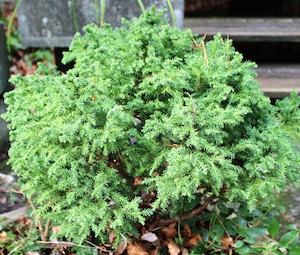
Cryptomeria japonica
Cryptomeria japonica‘Bandai Sugi’
Cryptomeria japonica‘Globosa Nana’
Cryptomeria japonica‘Knaptonensis’
Cryptomeria japonica‘Mushroom’
Cryptomeria japonica‘Pygmaea’
Cryptomeria japonica‘Verkades Broom’
Cryptomeria japonica‘Compressa’
Cryptomeria japonica‘Giokomo’
Cryptomeria japonica‘Jindai Sugi’
Cryptomeria japonica‘Monstrosa Nana’
Cryptomeria japonica‘Nana’
Cryptomeria japonica‘Tansu’
Cryptomeria japonica‘Vilmoriniana’
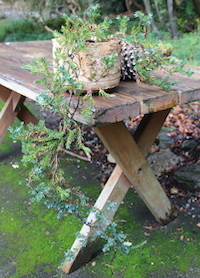
Juniperus
Juniperus chinensis‘Lemon Ball’
Juniperus communis‘Gold Cone’
Juniperus communis var. jackii
Juniperus pingii‘Glassell’
Juniperus scopulorum‘Table Top Blue’
Juniperus squamata‘Blue Star’
Juniperus squamata ‘Gold Flash’
Juniperus x-media‘Plumosa Aurea’
Juniperus x-media‘Plumosa Aureovariegata’
Juniperus x-media‘Shimpaku’
Juniperus chinensis‘Pyramidalis’
Juniperus communis‘Compressa’
Juniperus communis‘Little Spire’
Juniperus pingii‘Loderii’
Juniperus recurva‘Nana’
Juniperus squamata‘Blue Starlite’
Juniperus squamata‘Holger’
Juniperus x-media‘Blue ‘n Gold’
Juniperus x-media‘Sulphur Spray’
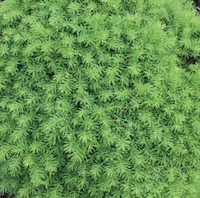
Picea
Picea abies‘Acrocona’
Picea abies‘Coolwyn Globe’
Picea abies‘Formaneck’
Picea abies‘Inversa’
Picea abies‘Little Gem’
Picea abies‘Nidiformis’ “Birds Nest Spruce”
Picea glauca‘Albertiana Conica’
Picea glauca‘Elf’
Picea glauca‘Nana’ “Dwarf White Spruce”
Picea omorika‘Nana’
Picea orientalis‘Barnes’
Picea pungens‘Blue Pearl’
Picea pungens‘Montgomery’ “Dwarf Blue Spruce”
Picea pungens‘Procumbens’
Picea abies‘Clanbrassiliana’
Picea abies‘Frohberg’
Picea abies‘Maxwellii’
Picea abies‘Pygmaea’
Picea glauca‘Alberta Globe’
Picea omorika‘Gunter’
Picea omorika‘Pimoko’
Picea orientalis‘Ferny Creek Prostrate’
Picea pungens‘Early Cones’
Picea pungens‘Mrs Cesarini’
Picea pungens‘Saint Marys Broom’
Picea sitchensis‘Sugarloaf’
Picea smithiana‘Ballarat’ “Dwarf Himalayan Spruce”
Picea sitchensis‘Tenas’
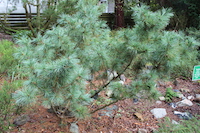
Pinus
Pinus albicaulis‘Engelm’
Pinus densiflora‘Osmaston Compact’
Pinus densiflora‘Pendula’
Pinus flexilis‘Bergman’s Dwarf’
Pinus flexilis‘Glenmore Dwarf’
Pinus mugo“Dwarf Mountain Pine”
Pinus mugo‘Gnom’
Pinus mugo‘Misty’
Pinus mugo‘Ophir’
Pinus mugo‘Pumilio’
Pinus mugo‘Spring Snow’
Pinus mugo‘Variegata’
Pinus parviflora‘Bergman’
Pinus parviflora‘Fuku-zu-mi’
Pinus parviflora‘Ire-fume’
Pinus pumila‘Glauca’
Pinus strobus‘Merrimack’
Pinus sylvestris‘Argentea Compacta’
Pinus sylvestris‘Compressa’
Pinus sylvestris‘Glauca Nana’
Pinus sylvestris‘Jeremy’
Pinus sylvestris‘Little Ann’
Pinus sylvestris ‘Repens’
Pinus sylvestris ‘Viridis Compacta’
Pinus thunbergii ‘Emery Dwarf’
Pinus densiflora ‘Alice Verkade’
Pinus densiflora ‘Low Glow’
Pinus leucodermis ‘Schmidtii’
Pinus mugo ‘Amber Gold’
Pinus mugo ‘Corleys Mat’
Pinus mugo‘Hesse’
Pinus mugo‘Pincushion’
Pinus mugo‘Valley Cushion’
Pinus nigra‘Globosa’
Pinus parviflora‘Fukai’
Pinus parviflora‘Gatsusan’
Pinus parviflora‘Hagoromo’
Pinus parviflora‘Koko no E’
Pinus strobus‘Nana Macopin’
Pinus strobus‘Sea Urchin’
Pinus sylvestris‘Albyns’
Pinus sylvestris‘Beuvronensis’
Pinus sylvestris‘Doone Valley’
Pinus sylvestris‘Hillside Creeper’
Pinus sylvestris ‘KluisPyramid’
Pinus sylvestris ‘Moseri’
Pinus sylvestris ‘Saxatilis’
Pinus sylvestris‘Watereri’
Thuja
Thuja occidentalis‘Caespitosa’
Thuja occidentalis‘Dumosa’
Thuja occidentalis‘Filiformis’
Thuja occidentalis‘Globosa’
Thuja occidentalis‘Holmstrupensis Gold’
Thuja occidentalis‘Little Gem’
Thuja occidentalis‘Pendula’
Thuja occidentalis‘Robusta Nana’
Thuja occidentalis‘Snow Queen’
Thuja occidentalis‘Sunkist’
Thuja orientalis‘Aurea Nana’ “Golden Biota or Bookleaf”
Thuja orientalis‘Juniperoides’
Thuja orientalis‘Morganii’
Thuja orientalis‘Rosedalis’
Thuja plicata‘Cuprea’
Thuja occidentalis‘Danica’
Thuja occidentalis‘Ericoides’
Thuja occidentalis‘Froebellei’
Thuja occidentalis‘Hetz Midget’
Thuja occidentalis‘Little Champion’
Thuja occidentalis‘Ohlendorfii’
Thuja occidentalis‘Rheingold’
Thuja occidentalis‘Stolwijk’
Thuja occidentalis‘Teddy’
Thuja orientalis‘Blue Cone’
Thuja orientalis‘Meldensis’
Thuja orientalis‘Minima Glauca’
Thuja orientalis‘Nana’ “Green Biota”
Thuja orientalis‘Wangs Green’
Thuja plicata‘Rogersii’
Other Conifers
Cephalotaxus harringtonia‘Fastigiata’ “Upright Japanese Plum Yew”
Diselma archeri
Microstrobus fitzgeraldii
Podocarpus alpinus
Podocarpus nivalis
Sequoia sempervirens ‘Adpressa’
Taxodium distichum‘Cascade Falls’
Thujopsis dolobrata‘Nana’
Cephalotaxus harringtonia‘Gnome’
Cupressus torulosa‘Nana’
Larix decidua‘Julian’s Weeper’
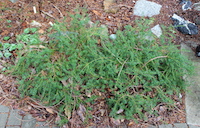
Microcachrys tetragona
Podocarpus alpinus‘Blue Gem’
Podocarpus totara‘Pendula’
Tsuga canadensis‘Bennett’
Tsuga canadensis‘Pendula’
Tsuga canadensis‘Sargent’s Weeping’
Tsuga mertensiana‘Elizabeth’




